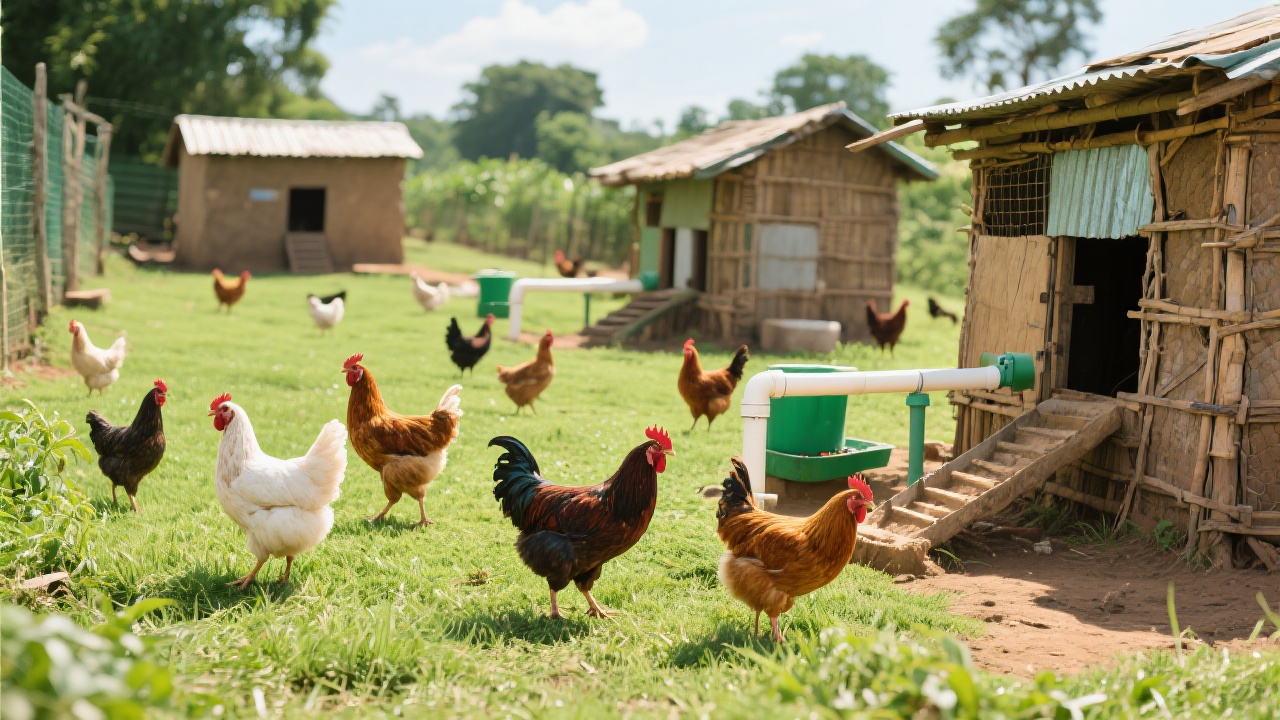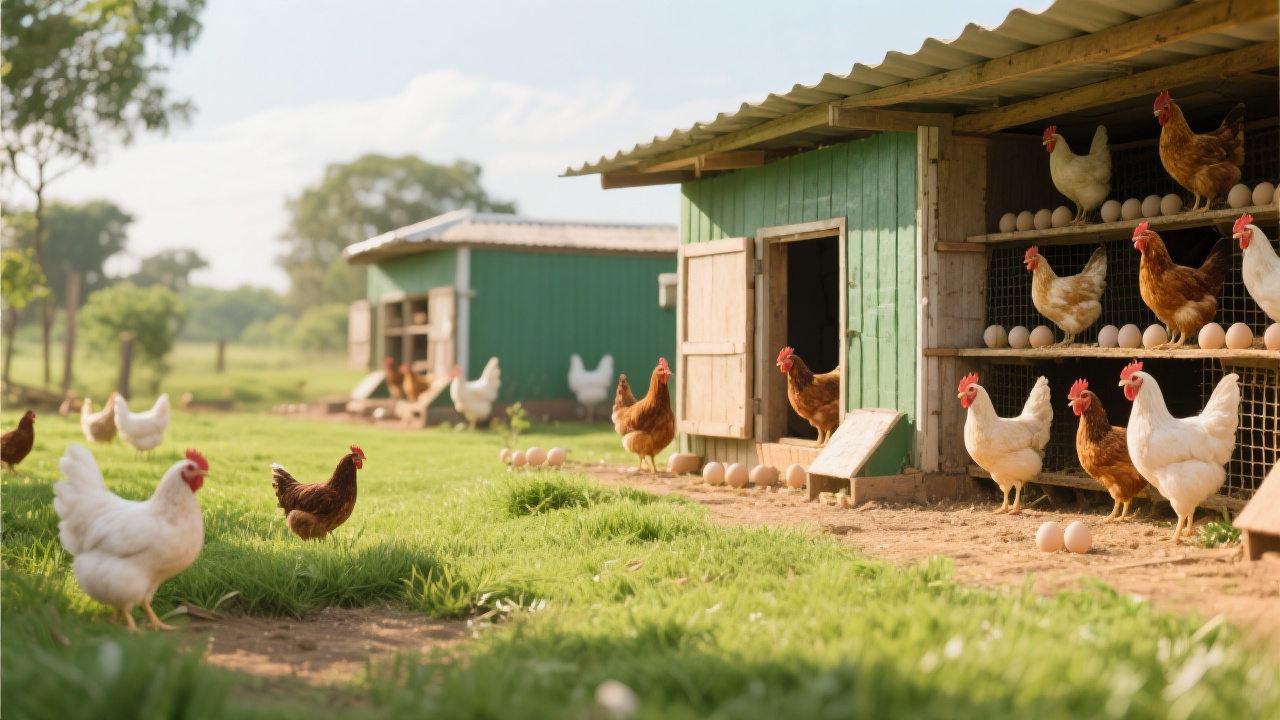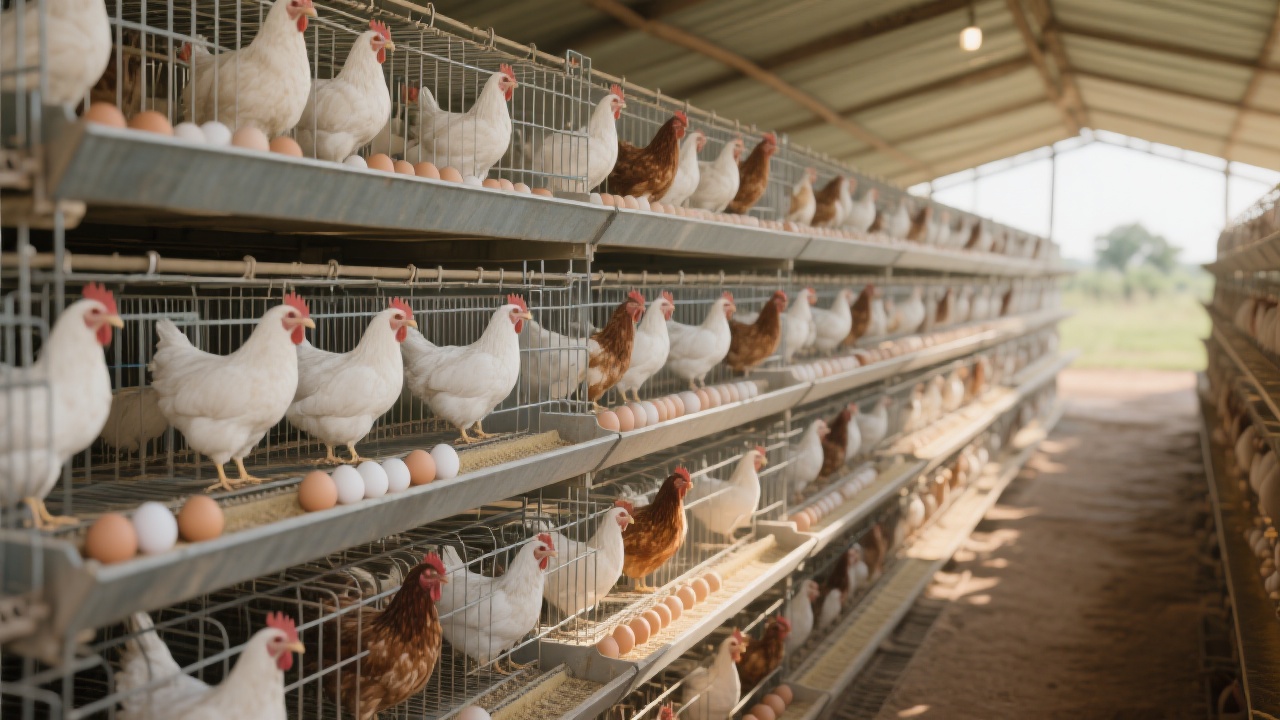
In the poultry industry, the efficient use of space and labor is crucial for maximizing profits. H-type laying hen cages have emerged as a game-changer in large-scale farms, offering significant advantages over traditional single-layer cage systems. These cages are designed to optimize space utilization, integrate automation, and provide a healthier environment for the hens, ultimately leading to higher productivity and lower labor costs.

The H-type structure of the laying hen cages allows for a more efficient use of vertical space. By stacking multiple layers of cages, farms can increase their hen by 30% - 50% compared to traditional single-layer systems. This means that more hens can be housed in the same floor area, effectively making every square meter more valuable. For example, a farm with a limited land area can significantly expand its production capacity without the need for additional land acquisition.
One of the most significant advantages of H-type laying hen cages is the integration of automated systems for egg collection and manure removal. These systems reduce the need for manual labor, which is not only time-consuming but also prone to human error.
Automated egg collection systems can quickly and efficiently gather eggs from the cages, reducing the risk of egg breakage and contamination. This process can be completed with minimal human intervention, saving up to 40% of the time previously spent on manual egg collection. Similarly, automated manure removal systems can regularly clean the cages, preventing the buildup of waste and maintaining a cleaner and healthier environment for the hens. This reduces the frequency of manual cleaning, saving up to 30% of the labor required for manure management.

To illustrate the benefits of H-type laying hen cages, let's look at some real-world examples. A small-scale farm with 5,000 hens switched from traditional single-layer cages to H-type cages. After the implementation, the farm was able to increase its hen存栏 to 7,000 hens without expanding the floor area. The automated systems reduced the labor force from 5 workers to 3, resulting in significant cost savings.
On the other hand, a large-scale farm with 50,000 hens saw even more substantial benefits. The increased space utilization allowed the farm to house 75,000 hens, a 50% increase in production. The automation systems also improved efficiency, reducing the labor force from 30 workers to 18. The overall cost savings in labor and increased production led to a significant boost in the farm's profitability.
H-type laying hen cages are designed to provide uniform ventilation and lighting throughout the cage system. Proper ventilation helps to remove harmful gases and moisture from the cages, reducing the risk of respiratory diseases among the hens. Uniform lighting, on the other hand, helps to regulate the hens' biological rhythms, promoting better egg production and overall health.
Studies have shown that hens housed in well-ventilated and well-lit cages have a lower mortality rate and produce higher-quality eggs. This not only improves the welfare of the hens but also reduces the cost of disease prevention and treatment for the farm.

When choosing H-type laying hen cages, it's essential to consider the size of your farm and your production goals. Smaller farms may benefit from a more compact cage design with basic automation features, while larger farms may require a more comprehensive system with advanced automation and environmental control.
It's also important to consider the long-term costs and benefits of the cage system. While the initial investment in H-type cages may be higher than traditional single-layer cages, the long-term savings in labor and increased production can outweigh the upfront costs.
You may be wondering if your chicken coop has achieved efficient utilization. If you want to learn more about how H-type laying hen cages can transform your farm, click here to explore our solutions.
Do you have similar problems in your industry? Share your specific scenario, and I'll send you 3 case studies of solutions from the same industry.

